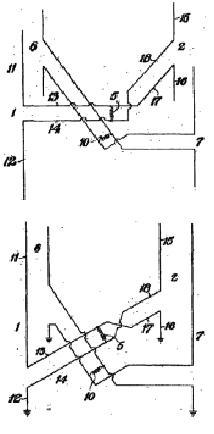 On August 11, 2010, a major wireless milestone passed largely unnoticed: the end of a tumultuous twelve year regulatory process to authorize ultra-wideband (or “UWB”) wireless systems. The FCC ordered ET Docket No. 98-153 “TERMINATED.” By dismissing the last outstanding Petitions for Reconsideration, the FCC has finally and firmly secured the future of UWB technology, originally authorized in 2002.
On August 11, 2010, a major wireless milestone passed largely unnoticed: the end of a tumultuous twelve year regulatory process to authorize ultra-wideband (or “UWB”) wireless systems. The FCC ordered ET Docket No. 98-153 “TERMINATED.” By dismissing the last outstanding Petitions for Reconsideration, the FCC has finally and firmly secured the future of UWB technology, originally authorized in 2002.
After years of lobbying by the nascent UWB industry, the FCC began this Docket in 1998 with the aim of establishing rules to govern the operation of UWB wireless devices under Part 15 rules. UWB proponents sought permission to operate systems at relatively “low” frequencies, below 4GHz:
“Thus, if precision range resolution is required within and around buildings and foliage, it is necessary to use lower frequency signals, below 4GHz, to penetrate various materials.” [Paul Withington, Comments of Time Domain Corporation, In the Matter of Revision of Part 15 of the FCC’s Rules Regarding Ultra-Wideband Transmission Systems, ET Docket 98-153, December 7, 1998, p. 15]
In the face of strong opposition from GPS (1.575 GHz), cellular (1.7-2.2 GHz), and other incumbent spectrum users, the FCC pushed UWB up to the 3.1 – 10.6 GHz band, initially authorizing UWB in 2002. As a general rule, implementing RF electronics is more difficult at higher frequencies. By relegating UWB to a much higher frequency band, commercial deployment of UWB systems was substantially delayed. Further, the initial report and order did not end opposition to UWB technology. A great article by Mitchell Lazarus in CommLawBlog details the regulatory and standards saga.
Despite the hurdles and delays posed by the regulatory process, there are a variety of UWB real-time location systems vendors including Ubisense, Zebra Enterprise Solutions (which acquired UWB pioneer MSSI), Time Domain Corporation, and Æther Wire and Location, Inc.
High data rate communications systems based on UWB have been slower to enter the market. Consultant Steven J. Crowley notes that other technologies, less encumbered by regulatory and standards hurdles are moving into the high data rate arena once claimed by UWB, including IEEE 802.11n-2009 (up to 600Mb/s) and Wireless Home Digital Interface (WHDI) with data rates up to 3 Gbps. Nevertheless – after having kept an awfully low profile in recent months – UWB wireless company Alereon (Facebook, Twitter) recently announced that their UWB “NoWire(TM)” technology will be used in Imation’s Wireless Video/Audio Extender.
“The wireless link between the PC and HDTV operates at speeds up to 220 Mbps via ultra wideband wireless technology, leaving the WIFI radio in the PC free to connect to the internet at full speed to stream video files from web sites such as Hulu, Netflix and YouTube.”
Alereon chips will also power Toshiba’s Wireless Dynadock W20. With UWB wireless communications products like these beginning to hit the market, we should soon be seeing how well UWB communications devices can compete against more conventional RF systems.
Previously on ÆtherCzar:
- Zebra to Unveil Next Generation UWB RTLS (7/19/2010)
- UWB RTLS from Æther Wire (6/16/2010)
- Early Radio: Narrow Band in Conception – UWB in Practice (6/8/2010)
- Time Domain Boss “Upbeat” (6/7/2010)
- A Comprehensive, Yet Readable Introduction to UWB (6/3/2010)
- The Rise and Fall of UWB (6/1/2010)



One thought on “FCC Terminates UWB Docket-UWB Communications Products Emerging”